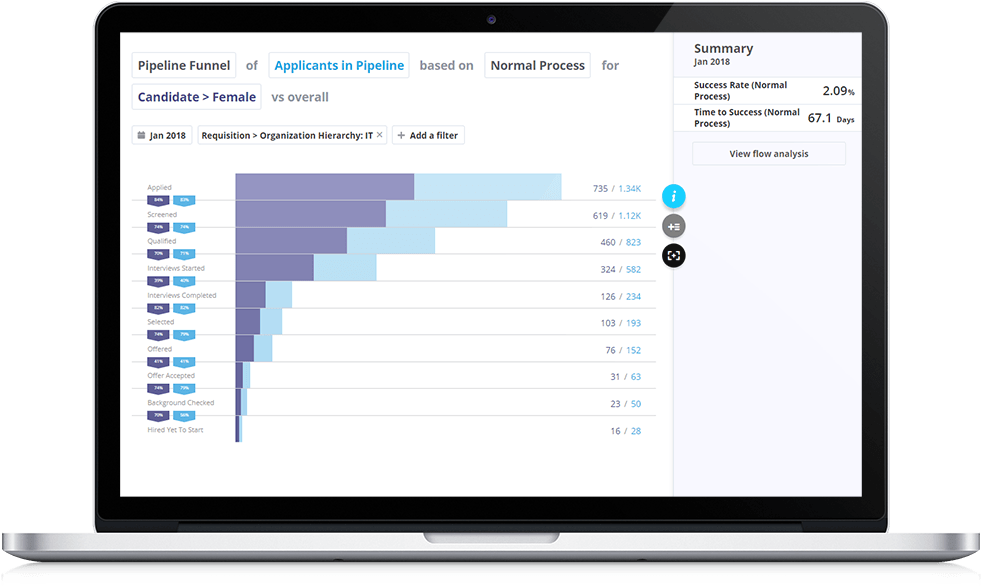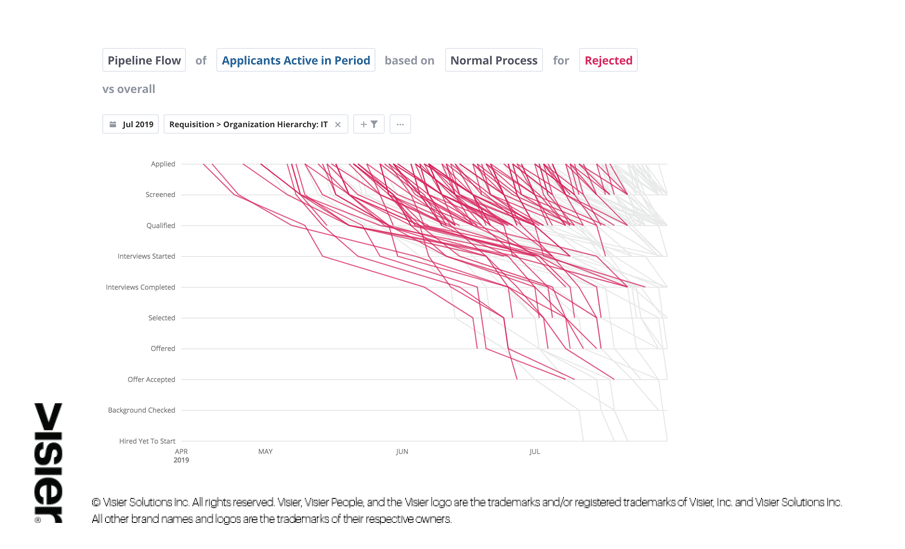How to Improve Recruiter Efficiency By Slaying Dirty Data Issues
I’s possible to keep your ATS, clean your dirty data, and get better insights into your recruitment processes. Here is how.

As unemployment rates continue to drop and the competition for talent in key roles heats up, talent acquisition leaders have little choice but to work smarter.
Recruitment’s impact ripples out across the employee lifecycle. Every time a recruiter gets the right person in the right seat, the benefits from measurable improvements in employee performance has an impact on bottom-line outcomes such as new sales, product improvements, or increased patient satisfaction scores.
Many recruiters specialize in quickly filling positions, making calls, and researching potential candidates to get talented people in the door to meet hiring managers. But with speed comes costly mistakes.
Talent acquisition leaders need a window into the recruiting function in order to see what processes are working or not, and ensure the right ones are being followed. Your Applicant Tracking System (ATS) is filled with valuable information that can optimize your recruiting and hiring efforts; insights that can better align talent acquisition with business strategy and enable you to accurately measure your results.
But getting this data from your ATS can be a struggle, one that can be hindered not only by expensive and lengthy data warehouse projects and consultations, but also the dreaded “dirty data.”
Talent Acquisition is Plagued by Dirty Data
The obstacle to a data-driven recruitment strategy isn’t lack of data. On the contrary, your recruiting pipeline is packed with valuable data points, but much of it can be messy, unreliable, and downright horrifying.
There is often a temptation to blame the ATS and indeed, sometimes dirty data is a result of your ATS’s analytical limitations. But it can also be caused by how the source system stores it, and just as often, the issue is that recruiters are following the wrong process and discipline.
“Zombie-state” applications can haunt many an ATS. These are applications that have not been properly closed out when a requisition has been completed. Zombie applications may not have been touched for years, but they can get extracted alongside your report on how many applications a role received, thus providing you with inaccurate metrics. This is a scary example, but even scarier still is that it’s a common one.
In any case, by the time talent acquisition leaders realize their data is full of rubbish, they believe a fresh start is the only way to correct the problem. However, the costs, time, and effort required to implement a new ATS should be enough to make you pause and consider other options.
Is It Really Time to Rip and Replace Your ATS?
First, ask yourself how long are you willing to wait? I’ve met with many talent acquisition organizations that are over a year into their new implementation and still haven’t seen results.
Second, can your team and the rest of the business handle the costs? Implementing a new ATS can take up to 16 months of effort and six or seven figures just to bring you to square one. This doesn’t include the loss in productivity your recruiters may suffer from the inability to get insights and measure what’s working and what’s not.
Third, do you have the time and resources to clean the data yourself? Even if you’re working with consultants, they will still need you and your team to ensure that the data they’re putting into your new ATS is free of errors. Of course, if your recruiters are not following the process to keep the data clean, you can expect to face the same problems again and again post-implementation.
Lastly, does your new (or old) ATS give you the insights you need to optimize your recruiting strategy? For example, in order to understand why it might be hard to fill a role, you need to understand where abandonment is happening in your pipeline. Doing this in an ATS isn’t as simple as going to the right screen in your analytics. It requires extracting the data from the correct systems and then, running a calculation on top of it. This is a manual process that takes time and expertise to get right.
The Alternative to Taking the Plunge on a New ATS
If asking yourself the above questions gives you nightmares, consider this: it’s possible to keep your ATS, clean your data, and get better insights into your recruitment processes. The solution is to implement a people strategy platform instead, one purpose-built for strategic recruiting excellence.
Even the cleanest ATS data in the most accessible format is still siloed off and separate from the rest of the employee lifecycle, as well as the business outcomes that your new hires achieve. If Talent Acquisition wants to refine its strategy and processes in order to better align with company goals, having the ability to examine and drill into broader datasets is key.
Implementing a talent acquisition analytics solution takes a much shorter amount of time at a fraction of the cost of a new ATS. The implementation process also naturally surfaces the bad data within your system–even those that wouldn’t otherwise be apparent right away–so clean up can be done at the same time.

It’s worth noting that the right vendor should be experts in all kinds of data formats and offer to do all the data clean up for you. Furthermore, look for an analytics partner that will keep your data clean on an ongoing basis (if it’s at no extra cost, even better) so you can be assured your insights are always accurate and up-to-date.
If you’ve read this article too late and are already in the midst of an ATS implementation, it’s still worthwhile to see if any talent acquisition analytics vendors have a solution that can be implemented alongside your new ATS. In some cases, the analytics can be added sooner, which means your data can be cleaned sooner, and you can start getting insights faster.
Make Data Hygiene a Requisite for Excellence
If your recruiters are only focused on getting requisitions filled as quickly as possible, they will inevitably relegate process and data hygiene concerns to the back burner. Changing recruiter behaviour may not be the easiest leg of the journey to better data, but in terms of time and effort, it compares favourably to implementing a new ATS.
To make sure they start putting only clean data into your system, you need to show recruiters the error of their ways. Again, analytics can help with this.
One of the main reasons that recruiters might cut corners on processes is that they don’t understand the impact that improper data hygiene has on overall strategy. Being able to present the data to them in a clear, visible format helps leadership create a narrative around the value of good data and the importance of stewarding it.
For example, show them how much quicker and easier it is to get data on the bottlenecks in your process when the data is clean, such as with a visual like this:

Remember that visibility leads to accountability. Use analytics to drill down into the recruitment data and separate requisitions by recruiter so you can hold individuals accountable.
The head of recruiting for one of our customers used Visier Talent Acquisition Analytics and it surfaced a compliance problem he wasn’t aware of. He could see that their Service Level Agreement (SLA) wasn’t being adhered to by his team. Prior to Visier, he would check the status of SLAs through other channels and hear that it was fine, but the data showed, plain and simple, that recruiters weren’t following the right process.
With an applied talent acquisition analytics solution in place, you can easily share relevant data with your recruiters, hiring managers, and others in the business, creating transparency around recruiting processes.
While this may seem like a small change to make, the impact cannot be understated. No matter how much you spend on that new ATS or if you decide to reap the benefits of talent acquisition analytics, if your recruiters are not entering and updating data according to the correct process, you will be back to dirty data within a few months, with nothing to show for your enormous effort and expense.
Start the cycle of showing your recruiters what good and bad data is, and regularly monitoring your people’s adherence to the right processes. I guarantee the benefits of doing this will show in the data in more ways than one.


